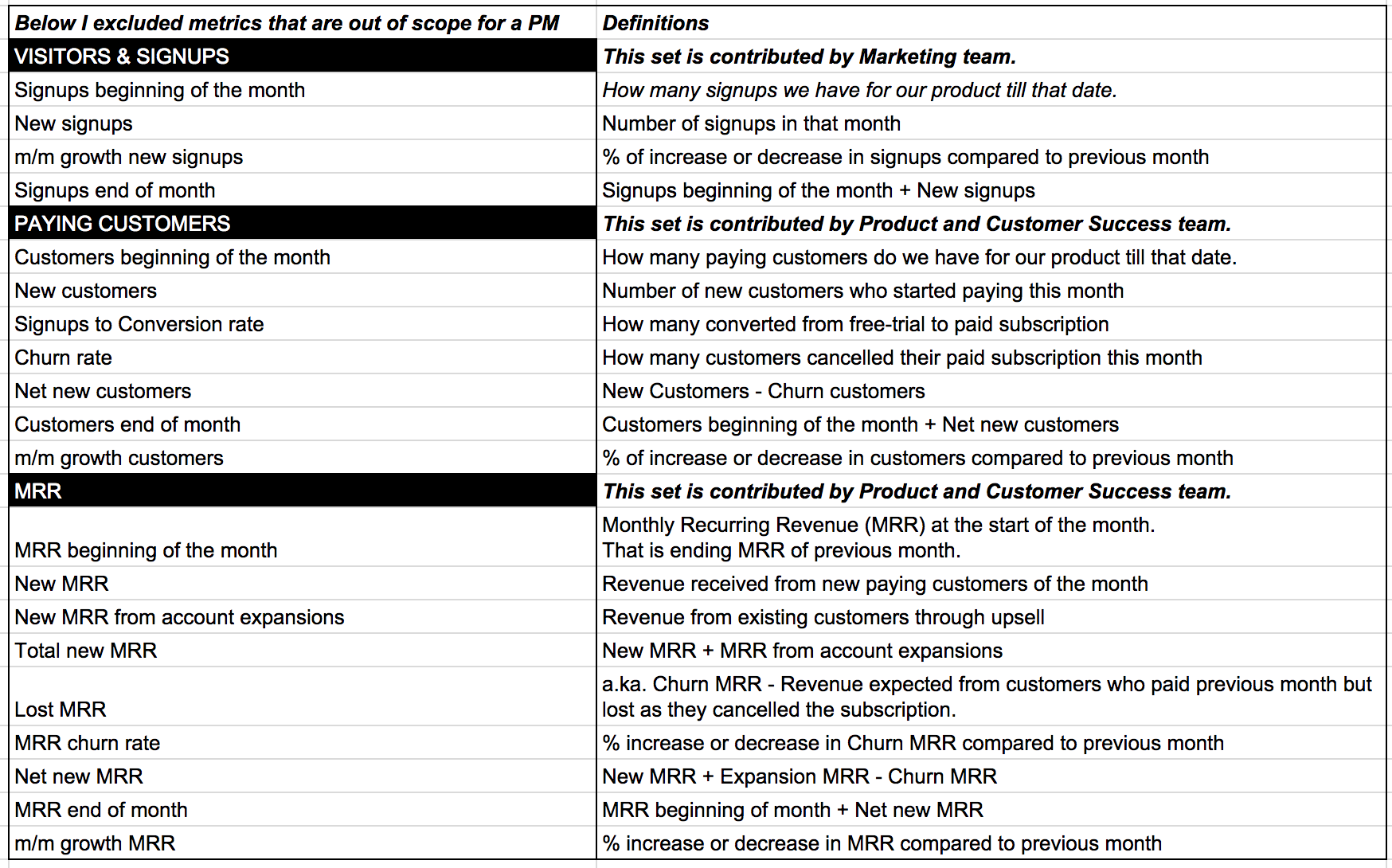SaaS Health Checkup
18 Jan 2015
. category:
product-management
.
Comments
#entrepreneurship
#startups
Metrics: One of the most important things I focus every day. The one that comes to my mind the moment I start my day and lasts until the end. Metrics also helps me to concentrate on prioritizing tasks and prevent me from doing tasks that are not worth at that moment at least.
Let’s take an analogy here; Fitness companies are betting on fitness gadgets because they believe that a user who has the determination to stay fit would be healthy if they regularly monitor their metrics. Metrics in this context could be such as number of calories gained, number of calories burnt, heart rate, and others. Yes, ones who regularly check metrics stay fitter than ones who check their health metrics once in awhile because when a user tracks daily, he/she would be pushed to work out more to achieve the right healthy metrics. It’s a constant reminder to stay focused. Similarly, is the case for business. We as a company have a goal to reach a particular target, be it the number of customers, revenue generated or any other, so to meet all the metrics that fulfill our final target, we need to track metrics and try tuning them in our favor so that we win.
Every team would have their metrics to help the company achieve its goal such as Marketing team for signups, product team for revenue, customer success team for customer happiness score, and support team for customer satisfaction score and app reviews.
Believing that you got an idea of the importance of metrics, let’s dive into the depth of some crucial ones. I shall also focus on some of the other team’s metrics even though they are not responsibilities of PM, and it is because of the interdependency with our metrics.
In our company, we took inspiration from David Cumming’s post about SaaS metrics and its good way to start as some cheat sheet.
Also, note that there are some popular frameworks like AARRR (Pirates) and HEART framework. The purpose of both remains same though the former is timeworn and the latter one is pretty new.
If we think about what is our goal, and what signals would help us to identify our proximity to the goal, then it would lead us to what we call as a metric. So ‘Goals+ Signals -> Metrics’ is the core of HEART framework and its pretty accurate. Want more? Google it 😉

There are two more important metrics: Customer Acquisition Cost (CAC) and Customer Lifetime Value (CLTV).
CAC is the amount we invested in acquiring one customer. So, CAC can be calculated as Marketing expenses in that month / Number of new paying customers in that month.
CLTV is the total amount of money likely to make off a given customer over the life of their account. So, CLTV can be calculated as ARPA / Customer Churn. Here, ARPA is Average Revenue Per Account = MRR of that month / Number of customers in that month.
Therefore, higher LTV and lower CAC is a good sign of growing business.
